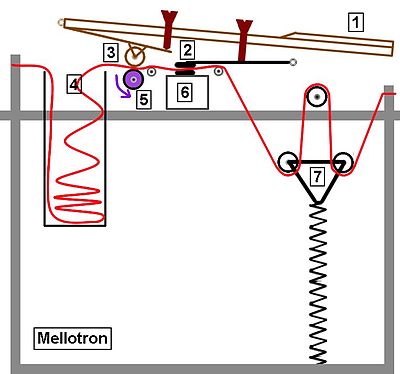Emergency Broadcast Network is the name of a multimedia performance group formed in 1991 that took its name from the Emergency Broadcast System. The founders were Rhode island school of Design graduates Joshua Pearson, Gardner Post and Brian Kane (author of the
Vujak VJ software).
Kane left EBN in 1992. The EBN Live Team included DJ Ron O'Donnell, video artist/technologist Greg Deocampo (founder of Company of Science and Art (Cosa)), artist/designer Tracy Brown and technologist Mark Marinello.
Josh Pearson, EBN's charismatic front man and principal performance artist, was also EBN's music composer and main video editor. The music and video editing techniques he personally developed and refined have been hugely influential on a generation of advertising and music video editors.
The first EBN video project was a musical remix of the Gulf War, created in 1991 as the war was still ongoing. The VHS tape of the remix project, which contained the George H.W. Bush "We Will Rock You" cover, became a viral underground hit, and was distributed widely by fans as bootleg copies. In the summer of 1991, EBN traveled with the first Lollapalooza tour, distributing tapes and showing their videos on a modified station wagon with TVs on the roof. The group also became well known for their media sculptures and stage props which were created by Gardner Post.
The EBN modus operandi was to take cable television broadcasts and remix them with a funky beat, often having the lyrics "sung" not by a singer but by half-second sound clips from TV, spliced together. For example, the lyric "electronic behavior control system" would be created with a clip of Ross Perot saying "electronic", followed by a clip of Georges H. W. Bush saying "behavior", then Ted Koppel saying "control", and finally a clip of Bill Clinton saying "system". This technique has been named Video scratching (Not to be confused with the British video art movement).
Among their videos are "Get Down"
and "Electronic Behavior Control System" from their 1995 album Telecommunication Breakdown, which mocks the way television controls our lives. Another was a cover of "We Will Rock You " by Queen
, with a vocal track made up of remixed clips of Georges W. Bush making announcements about the Gulf War
. Bono of U2
took notice of their work and hired them to provide visuals for their Zoo Tv Tour. EBN's video work featured prominently into the show, and their "We Will Rock You" cover was played at the beginning of each show. EBN also produced visuals for The Edge's performance of "Numb" on the 1993 MTV Video Music Awards. In addition to the visuals, audio from those clips were featured in the live performance to create rhythmic effects.
Here is one of the clearest versions I have ever found. I have seen an original VHS tape in the early 90s, and to my memory this seems like it, however short it was. Is also very hard to find any EBN video material since most of it was contained on VHS and those tapes never last after many years of use. So if you own an original VHS of Any EBN work, please rip it and upload for the community, thanks a lot!
Take it
here, here and here
more @
www.joshualpearson.com














































